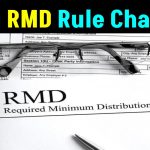
Planning Your 401(k) Contributions the Smart Way
Saving for retirement is one of the most important financial steps you’ll ever take. But how much should you contribute to your 401(k)? The short answer: It depends on your income, employer match, retirement goals, and financial obligations.
Financial experts recommend saving at least 15% of your pre-tax income, but not everyone can start there. The key is to contribute enough to maximize your employer’s match while steadily increasing your savings over time.
To help you navigate this important decision, we’ve broken it down step by step, with practical advice, expert-backed data, and clear examples.
How Much Should You Contribute to Your 401(k)?
| Topic | Details |
|---|---|
| Recommended Savings Rate | Aim for 15% of pre-tax income, including employer match. |
| 401(k) Contribution Limits (2025) | $23,500 (under 50), $31,000 (50+ with catch-up). |
| Employer Match | Varies by employer; some match 50% up to 6% of salary. |
| Start Small & Increase | If 15% isn’t possible, start at 6% and increase annually. |
| Other Retirement Accounts | Consider IRAs (Roth or Traditional) for additional savings. |
| Review Regularly | Adjust contributions based on life changes and market conditions. |
For official IRS limits and updates, visit: IRS.gov
Deciding how much to contribute to your 401(k) is one of the most important financial choices you’ll make. The ideal target is 15% of your income, but the most important step is starting early and taking advantage of your employer’s match.
Even if you can’t save 15% today, you can gradually increase your contributions over time. Your future self will thank you!
Also Check: New IRS Crypto Rules: Stricter Reporting, But a Temporary Safe Harbor Offers Relief!
How Much Should You Contribute to Your 401(k)?
Your 401(k) is one of the best tools for building long-term wealth. With tax advantages, employer contributions, and compound growth, even small contributions can add up significantly over time.
For example, a $500 monthly investment in a 401(k) growing at 7% annually could turn into $1.2 million in 40 years.
So how do you determine your ideal contribution amount? Let’s break it down.
Start With Your Employer Match: How Much Should You Contribute to Your 401(k)?
Don’t Leave Free Money on the Table
Many companies offer a matching contribution, meaning they contribute extra money when you put money into your 401(k). A common example:
- Employer matches 50% of your contributions up to 6% of your salary.
- If you earn $60,000 per year and contribute 6% ($3,600 annually), your employer adds $1,800 per year.
- That’s an instant 50% return on your investment!
Key Takeaway: Always contribute at least enough to get your full employer match—it’s free money.
Also Check: New Traffic Rules: DRIVING WITHOUT A HELMET OR SEAT BELT? FASTag Will Auto Fine You & Cancel Your License!
Aim for the 15% Target: How Much Should You Contribute to Your 401(k)?
What Experts Recommend
Fidelity and other financial institutions suggest saving 15% of your gross income for retirement. This includes your own contributions plus any employer match.
Here’s what that looks like for different income levels:
| Annual Salary | 15% Contribution | With 50% Employer Match (Up to 6%) | Your Contribution |
|---|---|---|---|
| $50,000 | $7,500 | $1,500 | $6,000 |
| $75,000 | $11,250 | $2,250 | $9,000 |
| $100,000 | $15,000 | $3,000 | $12,000 |
What if you can’t afford 15% yet? Start with 6% and increase by 1% each year.
Know Your Contribution Limits
The IRS sets annual contribution limits for 401(k) plans:
- 2025 Contribution Limit: $23,500 for individuals under 50.
- Catch-Up Contributions: Those 50 and older can contribute an extra $7,500, bringing the total to $31,000.
- New Super Catch-Up (Starting 2025): Individuals ages 60-63 can contribute an additional $11,250.
These limits adjust for inflation, so always check the latest IRS updates.
Official source: IRS 401(k) Limits
Also Check: 3 Big RMD Rule Changes – Don’t Get Caught Off Guard! (Required Minimum Distribution (RMD))
Balance Contributions with Other Financial Priorities: How Much Should You Contribute to Your 401(k)?
While saving for retirement is crucial, it shouldn’t come at the expense of financial stability. Here’s how to prioritize:
When to Contribute More to 401(k):
- Your employer offers a match (maximize it first).
- You have an emergency fund (3-6 months of expenses).
- You have no high-interest debt (credit cards, personal loans).
When to Pause or Lower Contributions:
- You’re paying off high-interest debt (focus on that first).
- You don’t have emergency savings (at least $1,000 to start).
- You’re struggling with monthly expenses (budgeting may help).
Pro Tip: If you get a raise, increase your 401(k) contributions automatically so you don’t feel the impact.
Consider Other Retirement Savings Options: How Much Should You Contribute to Your 401(k)?
If you max out your 401(k) or want more diversification, consider an IRA:
- Traditional IRA: Contributions are tax-deductible, but withdrawals in retirement are taxed.
- Roth IRA: Contributions are after-tax, but withdrawals in retirement are tax-free.
Income Limits Apply: Check the latest IRS guidelines for IRA eligibility.
How Much Should You Contribute to Your 401(k) (FAQs)
Should I contribute to my 401(k) if I have debt?
Yes, but prioritize high-interest debt first. At least contribute enough to get your employer match. Once debt is under control, increase contributions.
Can I withdraw from my 401(k) early?
Yes, but there’s usually a 10% penalty if you withdraw before age 59½, plus taxes. Some exceptions apply, like hardship withdrawals or a loan option.
What happens if I leave my job?
You have options:
Leave the money in your old 401(k).
Roll it over into an IRA or your new employer’s plan.
Cash it out (but taxes and penalties apply).
Can I contribute to both a 401(k) and an IRA?
Yes! Many people contribute to both to maximize savings and tax benefits.









